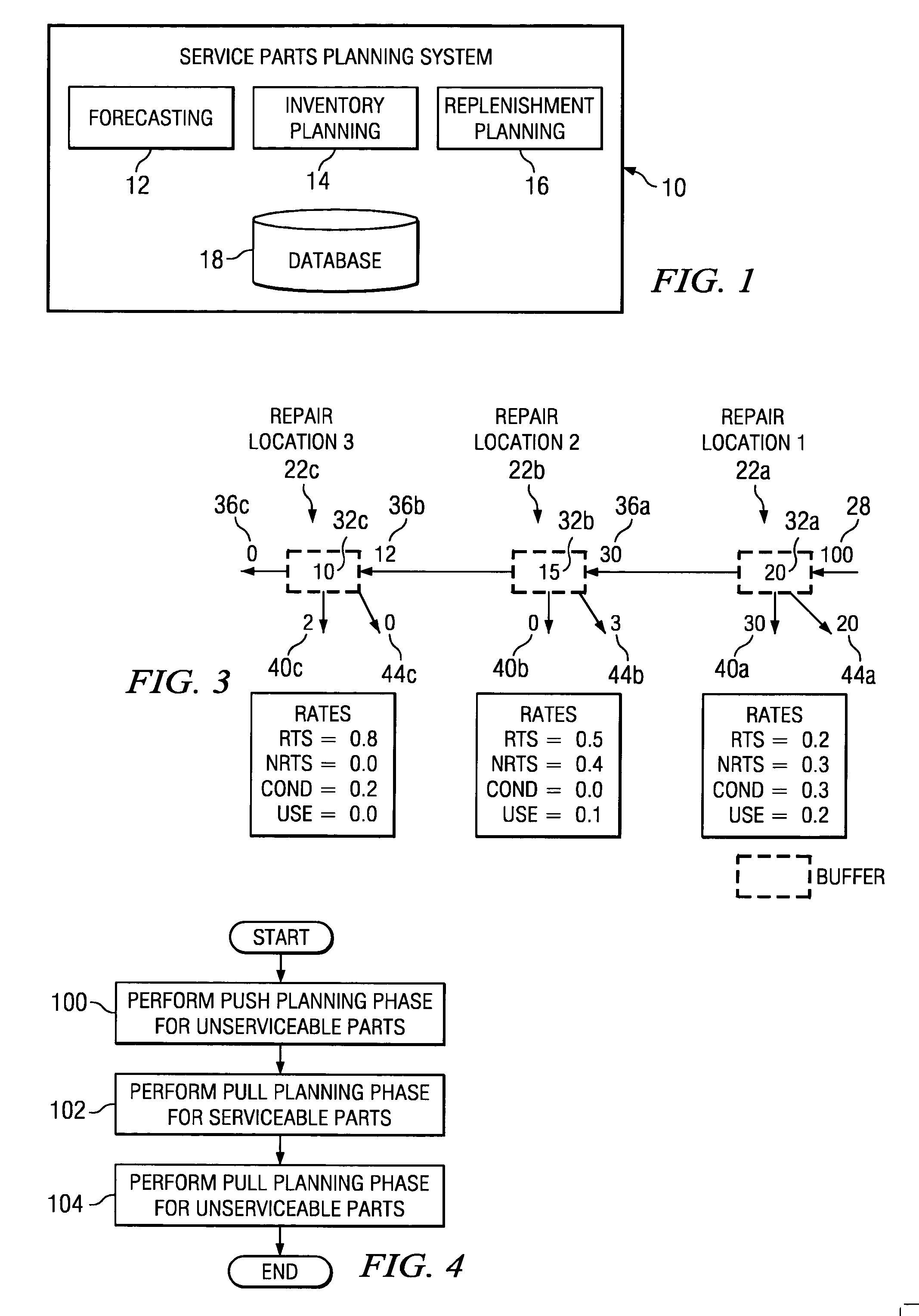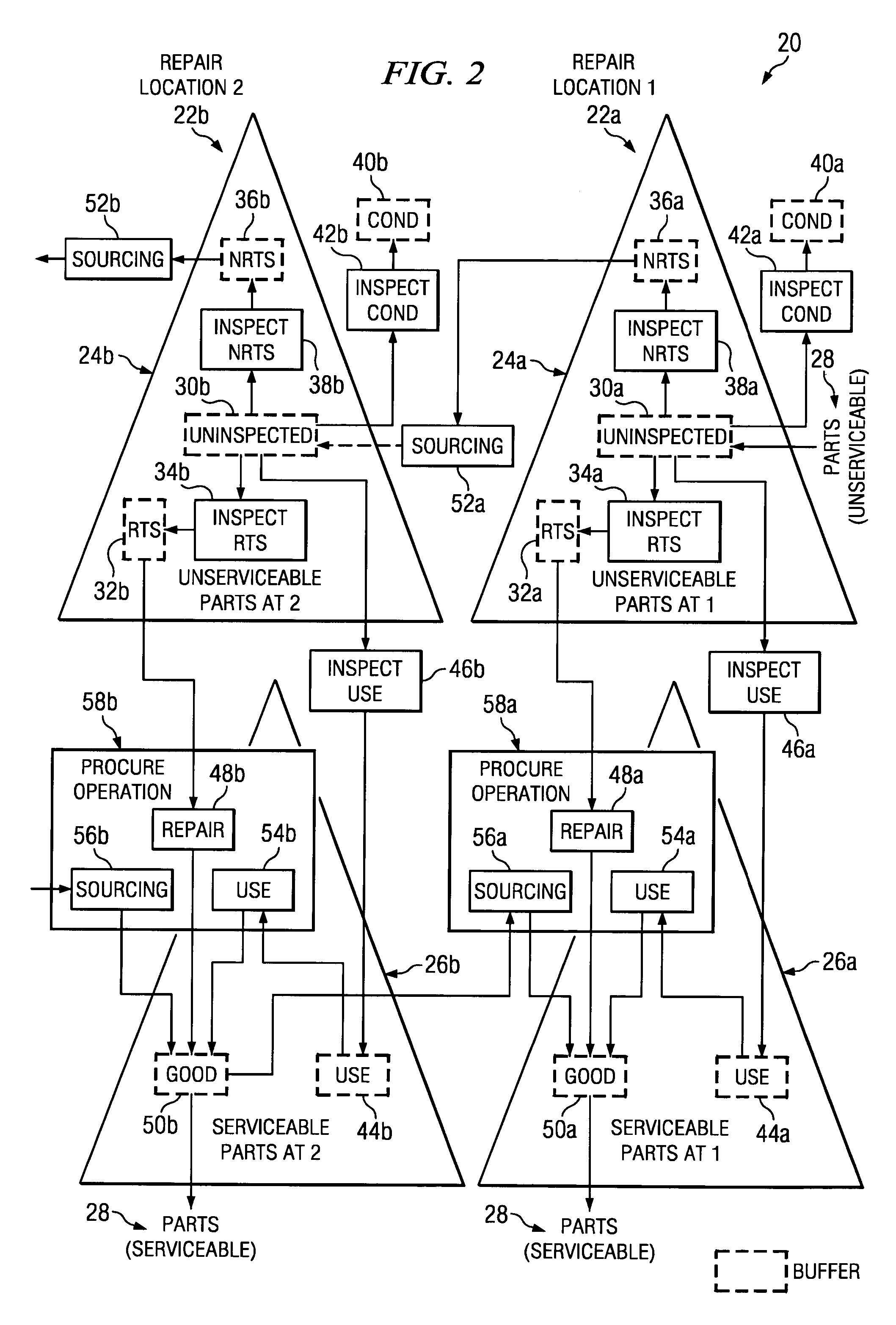Pull planning for unserviceable parts in connection with on-demand repair planning
a technology of unserviceable parts and repair planning, applied in the field of service parts planning, can solve the problems of unserviceable parts simply being discarded, repair processes may be very expensive, and further costs must be incurred to ship parts between repair locations, so as to reduce the disadvantages and problems associated with previous repair planning techniques, the effect of eliminating them
- Summary
- Abstract
- Description
- Claims
- Application Information
AI Technical Summary
Benefits of technology
Problems solved by technology
Method used
Image
Examples
Embodiment Construction
[0018]FIG. 1 illustrates an example service parts planning system 10. In general, system 10 generates plans relating to supply of service parts to replace broken or otherwise unusable parts. For example, unusable parts may include parts that were unusable at the time the parts were manufactured, parts that became unusable during service, or any other unusable parts.
[0019] In one embodiment, system 10 includes a forecasting engine 12 that generates demand forecasts for service parts based on future estimates regarding the number of parts that will break or otherwise become unusable and will need to be replaced. A separate demand forecast may be generated for each of a number of service parts for each of a number of forecasting periods. For example, forecasting engine 12 may generate a new demand forecast for a particular part each month for a specified time period in the future. The time period for a demand forecast is preferably longer than the time to complete the longest expected...
PUM
 Login to View More
Login to View More Abstract
Description
Claims
Application Information
 Login to View More
Login to View More - R&D
- Intellectual Property
- Life Sciences
- Materials
- Tech Scout
- Unparalleled Data Quality
- Higher Quality Content
- 60% Fewer Hallucinations
Browse by: Latest US Patents, China's latest patents, Technical Efficacy Thesaurus, Application Domain, Technology Topic, Popular Technical Reports.
© 2025 PatSnap. All rights reserved.Legal|Privacy policy|Modern Slavery Act Transparency Statement|Sitemap|About US| Contact US: help@patsnap.com



